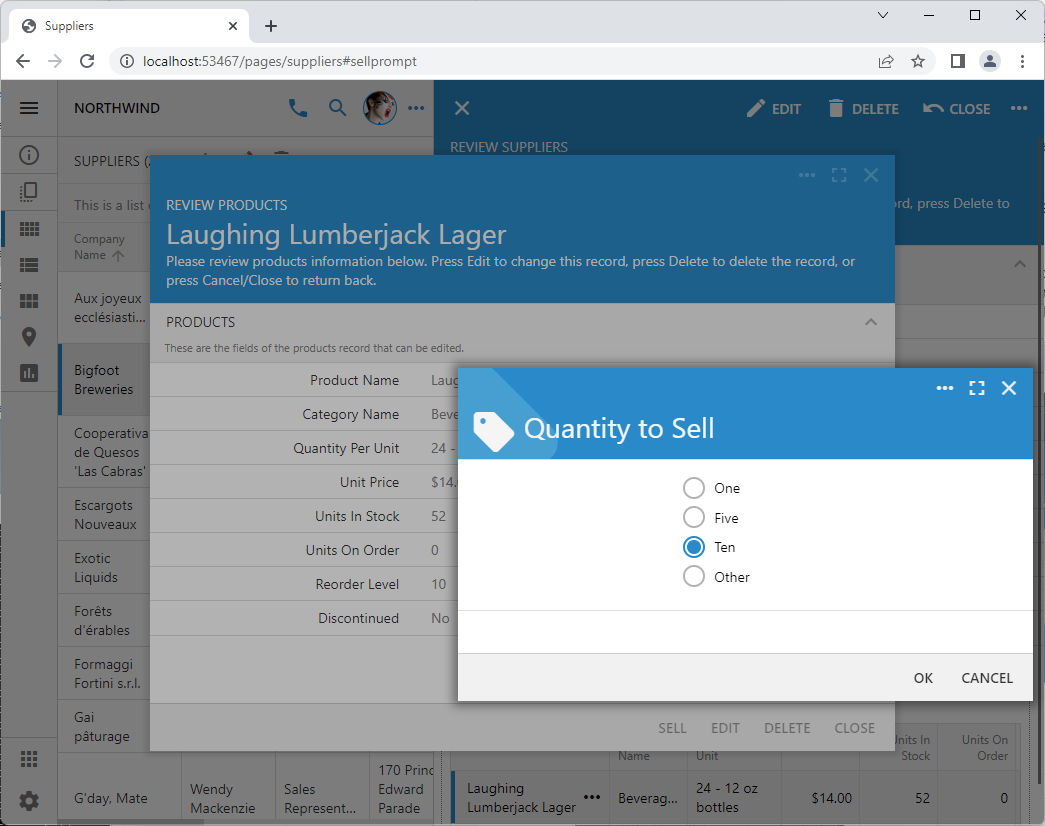The REST API Level 2 and above must support HTTP methods (verbs) in resource handling. For example, the request with the GET method is expected to return the resource data while the request with the PATCH method is expected to modify some of its fields. The number of HTTP verbs is limited and will not cover all possible scenarios of data manipulation.
Enhance the RESTful API of applications with custom actions to go beyond CRUD.
 Confirmation controller "SellPrompt" presents the user with an option to sell 1, 5, or 10 units of a product with a single touch. The "Other" option allows entering the arbitrary quantity of units to sell. The prompt is displayed when users press the "Sell" button in the product form.
Confirmation controller "SellPrompt" presents the user with an option to sell 1, 5, or 10 units of a product with a single touch. The "Other" option allows entering the arbitrary quantity of units to sell. The prompt is displayed when users press the "Sell" button in the product form.
 RESTful API Engine makes the custom action "sell" available to the client apps. The parameters of the action are specified in the "parameters" key of the payload. The new state of the resource is returned in the response.
RESTful API Engine makes the custom action "sell" available to the client apps. The parameters of the action are specified in the "parameters" key of the payload. The new state of the resource is returned in the response.